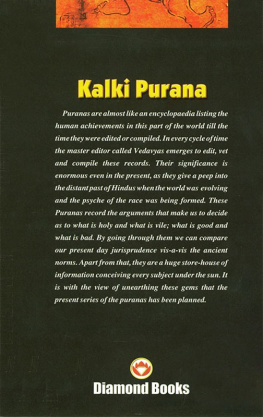Mukesh Chaturvedi - The Art and Science of Business Communication
Here you can read online Mukesh Chaturvedi - The Art and Science of Business Communication full text of the book (entire story) in english for free. Download pdf and epub, get meaning, cover and reviews about this ebook. year: 2017, publisher: Pearson India, genre: Children. Description of the work, (preface) as well as reviews are available. Best literature library LitArk.com created for fans of good reading and offers a wide selection of genres:
Romance novel
Science fiction
Adventure
Detective
Science
History
Home and family
Prose
Art
Politics
Computer
Non-fiction
Religion
Business
Children
Humor
Choose a favorite category and find really read worthwhile books. Enjoy immersion in the world of imagination, feel the emotions of the characters or learn something new for yourself, make an fascinating discovery.
- Book:The Art and Science of Business Communication
- Author:
- Publisher:Pearson India
- Genre:
- Year:2017
- Rating:4 / 5
- Favourites:Add to favourites
- Your mark:
- 80
- 1
- 2
- 3
- 4
- 5
The Art and Science of Business Communication: summary, description and annotation
We offer to read an annotation, description, summary or preface (depends on what the author of the book "The Art and Science of Business Communication" wrote himself). If you haven't found the necessary information about the book — write in the comments, we will try to find it.
The Art and Science of Business Communication — read online for free the complete book (whole text) full work
Below is the text of the book, divided by pages. System saving the place of the last page read, allows you to conveniently read the book "The Art and Science of Business Communication" online for free, without having to search again every time where you left off. Put a bookmark, and you can go to the page where you finished reading at any time.
Font size:
Interval:
Bookmark:

Pearson is the worlds learning company, with presence across 70 countries worldwide. Our unique insights and world-class expertise comes from a long history of working closely with renowned teachers, authors and thought leaders, as a result of which, we have emerged as the preferred choice for millions of teachers and learners across the world.
We believe learning opens up opportunities, creates fulfilling careers and hence better lives. We hence collaborate with the best of minds to deliver you class-leading products, spread across the Higher Education and K12 spectrum.
Superior learning experience and improved outcomes are at the heart of everything we do. This product is the result of one such effort.
Your feedback plays a ...
P.D. CHATURVEDI
Department of Languages
Birla Institute of Technology and Science, Pilani
PDC Educational Services, Delhi
MUKESH CHATURVEDI
Food Business Management Department
NIFTEM University, Sonepat

To the ever-loving memory of
Dr P.D. Chaturvedi&Mrs Pramilla Chaturvedi
There are two types of text booksone that follows a given syllabus; the other that defines syllabus. This edition is an attempt to do the latter.
After having tested the first edition for over five years, and the second for over two, we were convinced that the book had established very well the pedagogyteaching of Business Communication by case method, but the question, What exactly to teach in Business Communication to make students corporate-ready? still remained incompletely answered. Thus, the third edition had taken a very different approach to the content of a Business Communication course.
This fourth edition of The Art and Science of Business Communication is an attempt to take the book to a higher level by including some topics that will make the book more useful for not only the regular MBA students, but also the practitioners. For example, the chapter Theatre Technique for Effective Communication and Personality Development provides a hands-on, step-by-step guide to a faculty for a structured and programmed application of one of the most modern pedagogical tools of communication. Another new chapter Communication for Effective Marketing has been developed largely from the point-of-view of marketing executives using the most realistic jargons and language for easy application.
But, most importantly, this edition, for the first time, brings out the Science of Business Communication alongside the Art. There are two facets of Communication: Skills and Effectiveness; and, they are, often, used interchangeably. That could be the reason why, more often than not, most of the authors talk about development of Skills; and, try to suggest that skills would automatically lead to effectiveness. This work, since the very first edition, has been propagating the idea that Skills and Effectiveness are two different and distinct levels of communication. Skill is the Art, and how we go about using these skills to achieve Effectiveness is the Science of communicationthe process, the reasoning, the rationale, and the logic. And, this understanding of the approach to result-oriented communications helps develop skills better. Precisely, this edition takes this perspective. This edition also re-organizes some of the parts for a more logical structure and flow of topics.
What is communication? Communication is what it doesbringing people together. How does it do that? By establishing a commonness among people. The message (the verbally/non-verbally developed idea), the medium (the carrier of the message), and the environment (the surroundings in which communication takes place) bring about this commonness, a situational relationship for a (common) purpose. This is how we would like to explain communis, the Latin origin of the word communication.
If communication is a social need for an individual, it is the lifeblood of an organization. If we, as individuals, communicate 70 per cent of our waking time, an organization communicates 90 per cent of its working time. If individuals communicate for their personal purpose, communication in an organization is for business purposes. Thus, communication plays a crucial role in an organization, bringing all aspects of the business togetheremployees, customers, suppliers, intermediaries, the public, and so on.
Working people communicate at three levelspersonal, social, and professional. We could also call these the three spheres of communication. We have a natural ability to adapt to the communication requirements of each of these spheres. However, with time, some of us become more and more fixed in our style of communication and tend to use the same style across the three spheres. What does our tendency to be flexible or rigid across the three spheres of communication depend on? Does it depend on how conscious we are at a particular level, and for how long? For example, if someone communicates more consciously for most of the time at the workplace, would they not become more formal in their style for the rest of the day and spheres as well?
Flexibility in our communication helps us adapt to the situational requirements faster, which results in efficient communication, and efficient communication translates into less time and effort in getting ready to communicate appropriately at a particular level. So, consciousness gives control, which, in turn, helps develop flexibility and makes our communication effective and efficient.
Our contention is that 90 per cent of us are not conscious of our communication 90 per cent of the time. And those of us who are conscious about our communication, are more conscious of what we communicate than how we communicate. Business Communication prepares students for effective communication at the workplace by focusing on how to communicate in business situationshow to recognize the techniques that help in communicating a message accurately, how to handle intercultural situations that require thoughtful communication, how to use appropriate words and an effective tone for writing effectively, and so on. The book helps students master the art of communication be learning to be more conscious of their communication and developing a flexible and effective communication style.
- This edition incorporates two new chapters, Communication for Effective Marketing. These chapters have been included to keep pace with the evolving needs of corporates and the nature of business communication. Todays professionals need to work with clients and colleagues from different spheres. They require a more confident personality. They need to hone their marketing communication skills. The two new chapters discuss these issues in detail.
- The fourth edition also carries many new cases included in the last edition, such as the ones on report writing, non-verbal communication, and negotiation skills.
Font size:
Interval:
Bookmark:
Similar books «The Art and Science of Business Communication»
Look at similar books to The Art and Science of Business Communication. We have selected literature similar in name and meaning in the hope of providing readers with more options to find new, interesting, not yet read works.
Discussion, reviews of the book The Art and Science of Business Communication and just readers' own opinions. Leave your comments, write what you think about the work, its meaning or the main characters. Specify what exactly you liked and what you didn't like, and why you think so.












